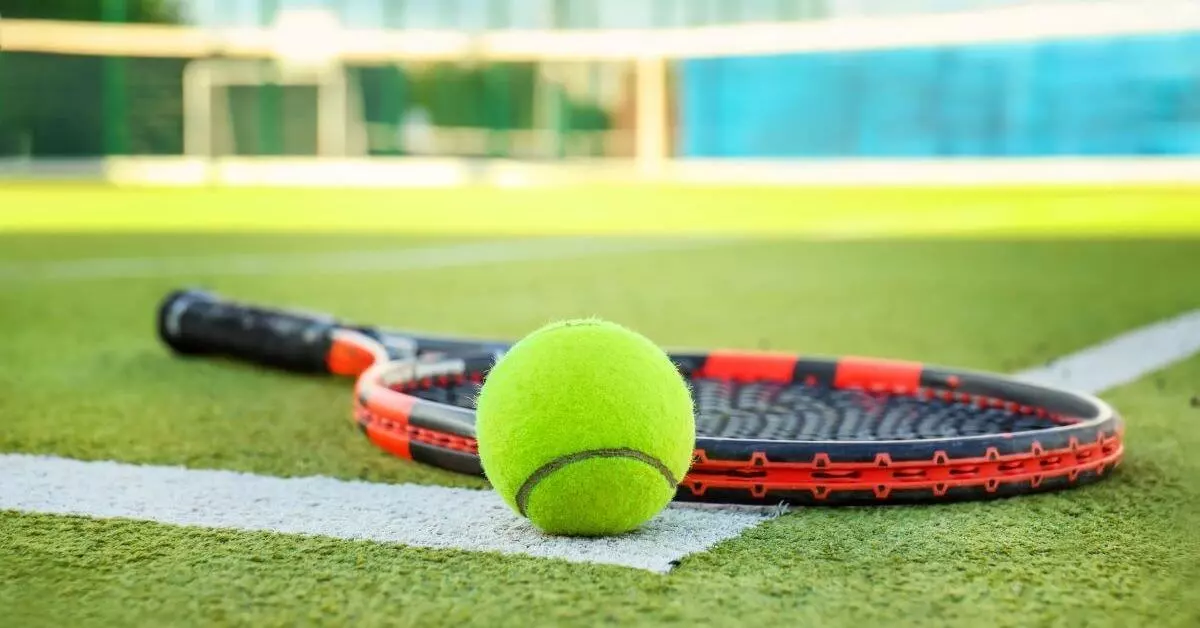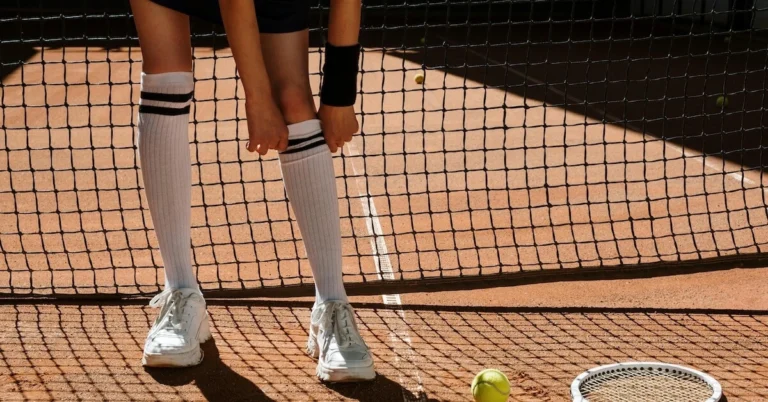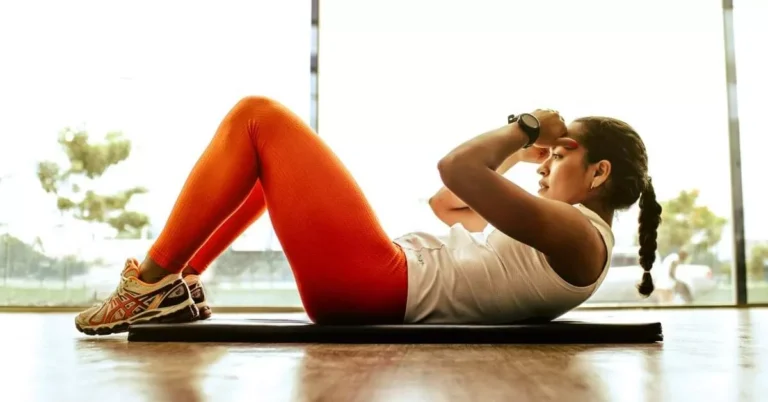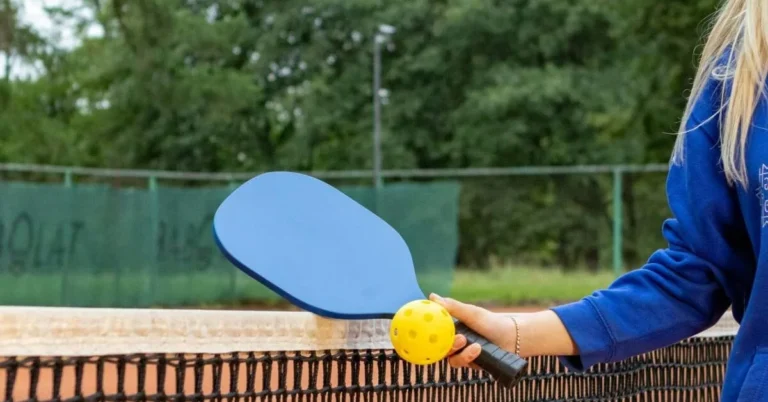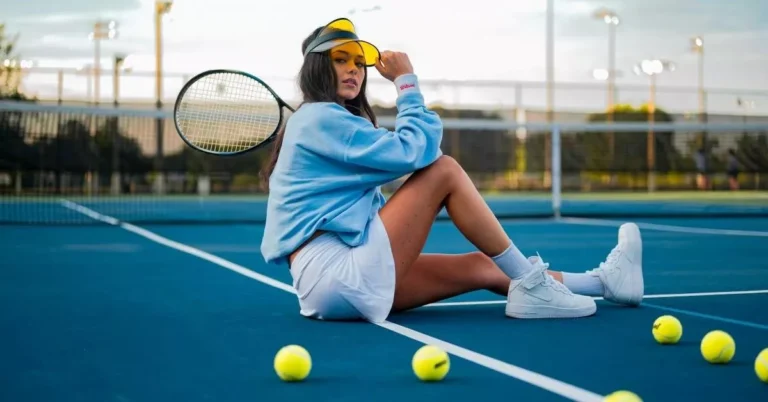In today’s article I will take a closer look at carpet tennis courts, which are losing more and more popularity. But why is that? Stay tuned and find out below.
In general carpet tennis courts are a type that has a surface made of carpet or artificial grass. These courts are often used in indoor facilities such as homes and sports centers, as they are cost-effective and less demanding than traditional hard courts. Carpet courts are known for their speed and low bounce, making them a favorite among players who prefer a fast-paced game.
Carpet courts were once a popular choice for professional tennis tournaments, with the US Open being played on a carpet surface until 1977. Despite their decline in popularity in recent years, carpet courts are still used in some professional tournaments and are a great option for recreational players. They offer a unique playing experience, with a surface that is softer and more forgiving than traditional hard courts.
While carpet courts require less maintenance than other surfaces, they are prone to tears and damage. Repairing any tears as soon as possible is essential to prevent them from getting worse. Small tears can be patched using carpet glue, but larger tears may require a professional repair. Overall, carpet tennis courts are a great option for players looking for a fast-paced game on a unique surface.
History of Carpet Tennis Court
The first carpet tennis court was introduced in the 1950s. It was made of a synthetic material that was designed to mimic the look and feel of grass. This type of court was popular because it was easy to maintain and provided a consistent playing surface.
In the 1970s, a new type of carpet tennis court was introduced. This court was made of a thicker, more durable material that was designed to withstand heavy use. It became popular in indoor tennis facilities because it provided a soft surface that was easy on the joints and reduced the risk of injury.
In the 1980s, carpet tennis courts became more popular in outdoor settings. This was due in part to the development of a new type of carpet court that was made of artificial turf with a sand in-fill. It was easier and cheaper to maintain than grass courts, making it a popular choice for recreational play in British and Asian tennis clubs.
Carpet tennis courts were used in several major tournaments, including the ATP Finals and the Davis Cup. However, in the early 2000s, the use of carpet tennis courts began to decline. This was due in part to concerns about the safety of the surface and the fact that it was not as consistent as other types of courts.
Today, carpet tennis courts are still used in some indoor facilities, but they are not as common as they once were. Many tennis players prefer other types, such as clay or hard courts, because they provide a more consistent playing surface and are less likely to cause injury. Nowadays in the big tournaments at ATP and WTA level carpet courts are even banned.
Overall, the history of carpet tennis courts is an interesting one that has seen many changes over the years. While this type of court may not be as popular as it once was, it will always be a part of the rich history of tennis.
Types of Carpet Tennis Court
Carpet tennis courts are a popular choice for indoor tennis facilities due to their cost-effectiveness and low maintenance requirements. There are different types of carpet tennis courts available, each with their own unique characteristics and advantages.
Artificial Grass
Artificial grass carpet courts are made of synthetic grass fibers that are tufted onto a backing material. The fibers are designed to mimic the look and feel of natural grass, but with the added benefit of being low maintenance. These types of courts are popular in regions where natural grass is not a viable option due to climate or maintenance requirements. Artificial grass carpet tennis courts provide a consistent playing surface with good traction and ball bounce.
Sand Filled
Sand filled carpet courts are made of synthetic fibers that are filled with sand to provide stability and cushioning. The sand helps to keep the fibers upright, providing a consistent playing surface. These types of courts are popular for their durability and low maintenance requirements. Sand filled carpet tennis courts provide good ball bounce and traction, making them a popular choice for indoor facilities.
Sand Dressed
Sand dressed carpet courts are similar to sand filled courts, but with a lower sand content. The fibers are shorter and denser, providing a smoother playing surface. These types of courts are popular for their speed and consistency. Sand dressed carpet tennis courts provide good ball bounce and traction, making them a popular choice for indoor facilities.
Water Based
Water based carpet courts are made of synthetic fibers that are coated with a layer of latex and sand. The latex helps to keep the fibers upright, while the sand provides stability and cushioning. These types of courts are popular for their speed and consistency. Water based carpet tennis courts provide good ball bounce and traction, making them a popular choice for indoor facilities.
Construction of a Carpet Tennis Court

Carpet tennis courts are typically constructed using a textile or polymeric material supplied in rolls or sheets of finished product. The International Tennis Federation (ITF) describes this surface as one of the fastest court types, second only to grass courts. Here are some key points to keep in mind when constructing a carpet tennis court:
- Sub-grade preparation: The first stage in constructing a carpet tennis court is to remove the topsoil to eliminate organic matter, which is unstable because it rots. The ground is then compacted and leveled to give a flat surface to build on. This is known as the sub-grade.
- Formation: The next stage involves laying a layer of porous asphalt or concrete on top of the sub-grade. This layer is known as the formation. It is designed to provide a stable base for the rest of the court.
- Foundation: The foundation layer is then added on top of the formation. This layer is typically made of a combination of crushed stone and gravel, and it is designed to provide drainage for the court.
- Regulating base: The regulating base is then added on top of the foundation. This layer is typically made of a mixture of crushed stone and sand, and it is designed to provide a smooth and level surface for the carpet.
- Wearing surface: The final layer is the carpet itself. The carpet is typically made of a synthetic material such as nylon or polypropylene, and it is glued to the regulating base using a special adhesive. The carpet is then cut to size and lined with white tape to mark the boundaries of the court.
Overall, constructing a carpet tennis court requires careful planning and attention to detail. The sub-grade, formation, foundation, regulating base, and wearing surface must all be installed correctly to ensure that the court is safe, durable, and provides a consistent playing surface.
Maintenance of Carpet Tennis Court
Carpet tennis courts require regular maintenance to ensure they remain in good condition. Here are some tips on how to maintain a carpet tennis court:
Patching and Repairing Tears
Carpet tennis courts are prone to tears, which can occur due to heavy use or accidental damage. It’s essential to patch and repair any tears as soon as possible to prevent them from getting worse. Small tears can be patched using carpet glue, but larger tears may require a professional repair.
Regular Cleaning
Regular cleaning is necessary to keep the carpet tennis court free from dirt, debris, and other contaminants. It’s recommended to sweep the court daily to remove any loose debris. A vacuum cleaner can also be used to remove dirt and dust. Deep cleaning should be done at least once a year to remove any stubborn stains or dirt that has accumulated over time.
Resurfacing
Over time, the carpet on the tennis court may wear out, become faded, or develop bald spots. In such cases, resurfacing may be necessary. Resurfacing involves removing the old carpet and replacing it with a new one. It’s recommended to resurface the court every 5-7 years, depending on the frequency of use.
Maintaining the Net
The net is an essential part of the tennis court and should be maintained regularly. It’s recommended to check the net for any tears or damage and replace it if necessary. The net should also be adjusted to the correct height and tension regularly.
Controlling Moisture
Moisture can damage the carpet on the tennis court, especially if it’s an outdoor court. It’s recommended to use a cover to protect the court from rain and other moisture. If the court becomes wet, it should be dried as soon as possible to prevent damage to the carpet.
By following these maintenance tips, the carpet tennis court can remain in good condition for years to come.
Advantages and Disadvantages of Carpet Tennis Court
Even though the popularity of carpet courts is waning, there are both disadvantages and advantages to the courts:
| Advantages | Disadvantages |
|---|---|
| Low Maintenance Carpet tennis courts are relatively low-maintenance compared to other types of courts. They do not require watering or grooming, and they are resistant to weather and climate conditions. This means that they can be used all year round, regardless of the weather conditions. | Low Ball Bounce One of the main disadvantages of carpet tennis courts is the extremely low ball bounce. The ball tends to skid and slide on the surface, making it difficult for players to control their shots. This can be frustrating for players who are used to playing on other surfaces, such as clay or grass, where the ball bounces higher. |
| Versatile Carpet tennis courts can be used for both indoor and outdoor play, which makes them a versatile option for tennis players and enthusiasts. They can also be used for other sports and activities, such as basketball or volleyball. | Increased Risk of Injury Carpet tennis courts can be taxing on the knees, which can increase the risk of injury for players. The surface is harder than clay or grass, and players may experience more wear and tear on their joints. This can be especially problematic for older players or those with existing joint problems. |
| Faster Play Carpet tennis courts provide a faster playing surface compared to other types of courts. This means that the ball bounces lower and faster, which can make the game more exciting and challenging for players. | Maintenance Carpet tennis courts require regular maintenance to keep them in optimal condition. Neglecting maintenance can lead to tears, wear and tear, and a shortened lifespan. Regular cleaning and vacuuming are essential to remove dirt, leaves, and debris that can accumulate on the surface and make it slippery and unsafe for players. |
| Cost-Effective Carpet tennis courts are a cost-effective alternative to other types of courts. They are less expensive to install and maintain, which makes them a popular choice for tennis players and enthusiasts who are on a budget. | Cost While carpet tennis courts are cheaper to build than other types of courts, they can be more expensive to maintain over time. The cost of cleaning and replacing the surface can add up over time, and facility owners should factor in these costs when deciding whether to install a carpet tennis court. |
Popular Locations with Carpet Tennis Court
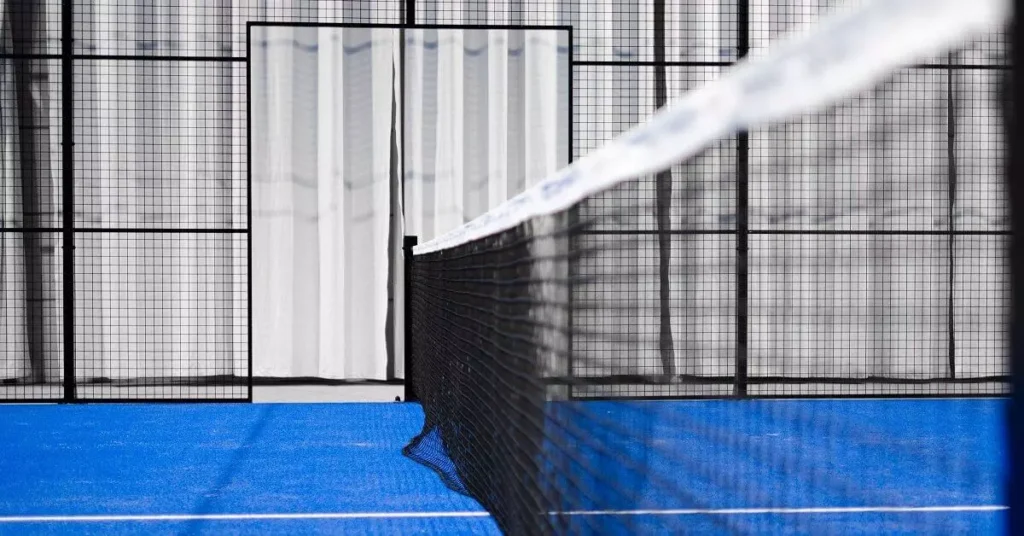
Carpet tennis courts are a popular choice for tennis players due to their softer surface and reduced impact on joints. Here are some popular locations with carpet tennis courts:
Homes and Private Facilities
Carpet tennis courts are a popular choice for homes and private facilities due to their cost-effectiveness and ease of maintenance. They are ideal for players who want to practice their skills or play a friendly match without having to leave their property.
Tennis Clubs
Many tennis clubs around the world have carpet tennis courts. In the 1980s, carpet tennis courts became popular in British and Asian tennis clubs for recreational play as they were easier and cheaper to maintain than grass courts. Today, many tennis clubs still offer carpet tennis courts for their members.
Indoor Facilities
Carpet tennis courts are also popular in indoor facilities, such as sports complexes and fitness centers. They are a cost-effective and less demanding alternative to a conventional hard court. Indoor facilities with carpet tennis courts are ideal for players who want to play tennis year-round, regardless of weather conditions.
Cost of Carpet Tennis Court
Carpet tennis courts are a popular choice for indoor tennis facilities and homes due to their cost-effectiveness and low maintenance. The cost of installing a carpet tennis court can vary depending on several factors, including the size of the court, the type of carpet material used, the installation method, and the location.
Factors Affecting the Cost
Size
The size of the court is one of the most significant factors that affect the cost of installation. Larger courts require more materials and labor, which can increase the overall cost. Generally, a standard tennis court is 78 feet long and 36 feet wide, but the size can vary depending on the available space.
Material
The type of carpet material used also affects the cost of installation. There are two main types of carpet materials used for tennis courts: synthetic and natural. Synthetic materials are less expensive and require less maintenance, while natural materials are more expensive and require more maintenance.
Installation Method
The installation method can also affect the cost of installing a carpet tennis court. The two main methods of installation are glue-down and loose-lay. Glue-down installation is more expensive but provides a more stable and durable surface. Loose-lay installation is less expensive but can be less stable and durable.
Location
The location of the court can also affect the cost of installation. If the court is located in an area with high labor costs or limited access, the installation cost can be higher. Additionally, if the court requires additional site preparation, such as grading or excavation, the installation cost can also increase.
Cost Range
The cost of installing a carpet tennis court can range from $15,000 to $50,000, depending on the factors mentioned above. It is important to get a detailed quote from a professional installer to get an accurate estimate of the cost. Additionally, ongoing maintenance costs, such as cleaning and repairs, should also be factored into the overall cost of owning a carpet tennis court.
FAQ
What is the difference between carpet and hard court tennis?
Carpet tennis courts are made of a textile or polymeric material supplied in rolls or sheets of finished product, while hard courts are made of concrete or asphalt covered with an acrylic coating. Carpet courts are faster than hard courts, which means that the ball bounces lower and moves faster. This makes carpet courts more suitable for players who like to play a fast-paced game.
What are the advantages of outdoor carpet tennis courts?
Outdoor carpet tennis courts have several advantages over other types of courts. First, they offer better traction and reduce the risk of injuries. Second, they are more comfortable to play on, as the surface is softer than hard courts. Third, they are more durable and require less maintenance than clay courts.
How is carpet tennis court maintenance different from other types of courts?
Carpet tennis courts require regular maintenance to keep them in good condition. The surface needs to be swept and vacuumed regularly to remove dirt and debris. The lines also need to be painted regularly to ensure that they are visible. In addition, the surface needs to be watered regularly to prevent it from drying out and cracking.
What are the most common injuries on carpet tennis courts?
The most common injuries on carpet tennis courts are ankle sprains and knee injuries. These injuries are often caused by the fast-paced nature of the game and the hard surface of the court. To prevent injuries, players should wear proper footwear and warm up before playing.
What is the history of carpet tennis courts in the ATP?
Carpet tennis courts were first introduced in the ATP in the 1970s. They quickly became popular due to their fast-paced nature and the fact that they were suitable for indoor play. However, carpet courts were phased out in the ATP due to concerns about player safety.
Do you prefer the traditional tennis court or are you a fan of the unique playing surface provided by a carpet tennis court? Share your thoughts and join the conversation in the comments below.

